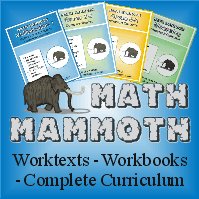Sue Patrick's Workbox System gives a framework to providing an organized, fun way of covering your school material quickly without frustration while providing your student a rich education. Mrs. Patrick provides numerous tools and visual aids to facilitate these goals. In her book, Mrs. Patrick not only explains this framework but provides suggestions for encouraging learning. She also gives tips on how to make your current material more useful.
My approach to Sue Patrick's Workbox System User Guide was one of trying to understand the big picture. It would be easy to get lost in the minutia of the system. But I wanted to look at the broader perspective to truly understand what the goal was. This would allow me to implement the system for my family in an effective way.
Every family is different and each child within that family is unique. So how each family uses this system may look different. If the original setup is what is most effective, then use that. But if a part is not effective or is overkill, then change it. You know your children best and the goal is to provide an efficient, enjoyable learning environment for them. Personally, the clutter of using the shoe boxes would drive me batty. We also don't have a "classroom" nor do we have individual desks. So the system as written does not fit our family.
This system can be used at any age. At the junior high and high school levels in our house, however, the actual daily planning is done by the student, not by me. The skill of time management is a crucial one to learn. And part of that learning process is not having someone else plan each step of your day. Initially this planning process will be done with the aid of the parent. But by high school, my students should have the maturity to plan their days. This does not mean that I will no longer be teaching. But it does mean that I will not be organizing their workload.
Our goal is to provide the necessary components so that my children can move through their day with direction and purpose while learning their material with maximum retention. For my youngest daughter that means presenting the material in small units interspersed throughout the day with fun activities and review all while maintaining the proper balance between independent work and teacher interaction. For my older girls it means giving them the tools to stay on task and a check-in point so I know where they are in their day.
One part of the book that I was greatly disappointed in was Mrs. Patrick's recommendation to teach children 1000-2000 sight words before teaching them phonics. I have seen a child learn to read with phonics and it is a beautiful sight. The student is truly equipped to read. But for a child to have to rely on words he has memorized instead of giving him the tools to decode all words just does not make sense to me. Why confuse the brain with sight words when you can give the building blocks right from the beginning? In The New Illiterates, reading expert Sam Blumenfeld writes, "There is probably no way more calculated to confuse, discourage, and finally frustrate a child than teaching him to “read” via the whole-word method. Not only does this method not teach the child to read, but it places almost insurmountable obstacles to his ever learning to read. The amazing thing is not how many child fail to learn how to read by this method, but how many manage to circumvent the method and learn to read despite it." (31) The goal is to make learning easier for a student, not harder.
The part of Sue Patrick's website that I thought really neat is that she offers Starter Sets and Center Kits. For someone like me, that is great. I do not always have the time, energy or desire to create these and really like the option of purchasing them ready made. You can also purchase consulting from Mrs. Patrick if you need someone to help walk you through streamlining your homeschool.
Children thrive with structure and boundaries. They like to know where they are headed and they do not like surprises. If you are lacking a structure system in your homeschool, Sue Patrick's Workbox System may provide this much needed part of your child's life. The User Guide is an inexpensive introduction to her system and can be purchased as an e-book ($19) or printed book ($19.95). With the purchase of the book you will have access to download the basic forms she mentions.
You can view how other Crew families utilized Sue Patrick's Workbox System here.
Disclosure:This product was provided to our family for free as members of the 2009-2010 Old Schoolhouse Magazine Homeschool Crew. No further compensation was received. Reviews and opinions expressed in this blog are my own.











2 comments:
Try playing a board game Er-u-di-tion which incorporates both basic phonics and sight words.
I think the best approach to teach a child to learn to read is phonics.
However, certain words are phonetically irregular and need to be memorized so a combination of both phonics and whole language is a great approach.
This is the part that I find so sad. Mixing sight words and phonics is also detrimental to a child's learning. Yet it seems that so few people know that there are very, very few "sight" words that cannot be read phonetically.
Post a Comment